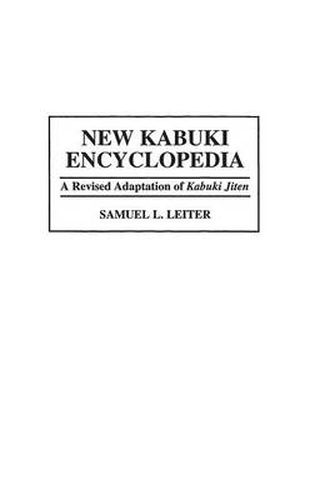Readings Newsletter
Become a Readings Member to make your shopping experience even easier.
Sign in or sign up for free!
You’re not far away from qualifying for FREE standard shipping within Australia
You’ve qualified for FREE standard shipping within Australia
The cart is loading…






Kabuki has been a part of Japanese culture for nearly four centuries. The plays performed today are generally selected from a classic repertoire that gradually ceased to develop once Japan broke the chains of its isolationist policy and began the surge toward Westernization. The plays largely reflect the values of feudal Japan and they portray a world of noble samurai overcoming evil adversaries, adulterous lovers overcoming their dilemmas through double suicide; parents sacrificing their children in the name of loyalty to a superior and children giving up their lives for the sake of their parents. Though kabuki is so essential to the heritage of Japan, it still remains largely a beautiful mystery to the West. This reference provides a comprehensive guide to the world of kabuki. An extensive revision and expansion of the 1979 Kabuki Encyclopedia, this volume includes many new illustrations, a detailed index, thorough cross-referencing, expanded descriptions of plays, a bibliography of English-language and Japanese sources and 400 new entries. The entries are arranged alphabetically and the volume’s appendices include a chronological table of kabuki history, a list of all major formal play titles, a list of all variant or popular titles, genealogical charts and a list of all major actors’ stage nicknames (yago) currently in use.
$9.00 standard shipping within Australia
FREE standard shipping within Australia for orders over $100.00
Express & International shipping calculated at checkout
Stock availability can be subject to change without notice. We recommend calling the shop or contacting our online team to check availability of low stock items. Please see our Shopping Online page for more details.
Kabuki has been a part of Japanese culture for nearly four centuries. The plays performed today are generally selected from a classic repertoire that gradually ceased to develop once Japan broke the chains of its isolationist policy and began the surge toward Westernization. The plays largely reflect the values of feudal Japan and they portray a world of noble samurai overcoming evil adversaries, adulterous lovers overcoming their dilemmas through double suicide; parents sacrificing their children in the name of loyalty to a superior and children giving up their lives for the sake of their parents. Though kabuki is so essential to the heritage of Japan, it still remains largely a beautiful mystery to the West. This reference provides a comprehensive guide to the world of kabuki. An extensive revision and expansion of the 1979 Kabuki Encyclopedia, this volume includes many new illustrations, a detailed index, thorough cross-referencing, expanded descriptions of plays, a bibliography of English-language and Japanese sources and 400 new entries. The entries are arranged alphabetically and the volume’s appendices include a chronological table of kabuki history, a list of all major formal play titles, a list of all variant or popular titles, genealogical charts and a list of all major actors’ stage nicknames (yago) currently in use.